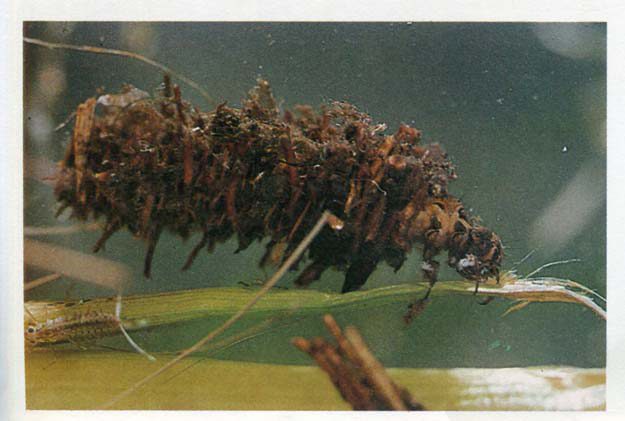John Clegg, « Caddis fly: a case for protection », The Living Countryside, A weekly nature guide to the British Isles, Londres, n° 9, 1981, p. 77.

They are an important link in the fresh-water food chain since a great many fish and water birds feed on both adults and larvae. Since the larvae, with soft, caterpillar-like bodies, make easy meals for predators, protection is vital. Still and slow-moving water species build cases out of surrounding materials, while others-those in flast-flowing streams-weave silk nets.
Self-protection There are a many as eight different methids employed by cae-building larvae to make their ass, but all involve the cementing together of sand, bits of vegetation or empty shells, using silk produced from a special gland near the mouth.
Each species favour different materials and makes a case of a recognisable pattern. The larva attaches itself firmly to the Inside of the case with a pair of hooks situated at the tip of its abdomen. It breathes underwater by means of feathery gills, undulating its body Inside the case so a current of water passes over the gills. The head and legs protrude from the case so the larva can move in search of food. Case-builder are vegetarians.
